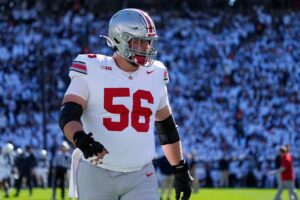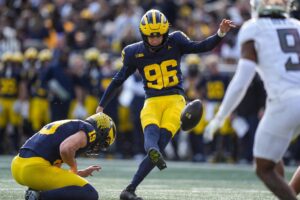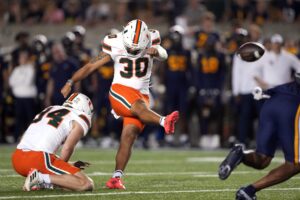The SEC vs. Vanderbilt: Facilities and Stadiums. What is being done to help Derek Mason make the Vanderbilt football team competitive and relevant? How is it possible that Vandy is so far behind the rest of the SEC in improvements to their football facilities? Why haven’t there been any stadium upgrades in the last 38 years? What does Vanderbilt have to offer incoming athletes vs. what the rest of the SEC has to offer?
Yes, there has been some money spent on an indoor practice football field, which some other schools have just recently built. However, Vandy is still light years behind the rest of the SEC. As I promised, here is a breakdown of what the other schools have invested in their football facilities and stadiums in the last 10-15 years.
The SEC vs. Vanderbilt: Facilities and Stadiums
Alabama:
In 2013 Alabama spent $9 million dollars renovating its football-only facility. Though not surprising since they have won five of the last nine college football championships. They are currently planning a $288 million renovation of Bryant-Denny Stadium, including the locker rooms, concourses, recruiting lounge as well as putting in new restrooms and concession stands. These renovations will begin after this season.
Arkansas:
Arkansas added the $40 million dollars, Fred Smith Football Center in 2012. The center includes a nutrition center, the team’s weight room, a barbershop, players’ lounge, locker room, training room, as well as indoor and outdoor practice facilities. They also spent $160 million on upgrades to the Donald W. Reynolds Razorback Stadium in 2018, including a complete rebuild of the North end zone and the Frank Broyles Athletic Center.
Auburn:
The Tigers added a $12.5 million indoor practice facility in 2011. Coupled with an upgrade in 2018 to both their football facilities and Jordan-Hare stadium, with $28 million and $12 million spent, respectively.
Florida:
In 2015 they finally opened an air-conditioned indoor practice facility. Furthermore, the University of Florida has approved a $65 million dollar, 130,000 square-foot football-only facility. They are due to break ground in 2020.
Georgia:
In September, the Bulldogs approved an $80 million expansion. This is the THIRD football facility upgrade since Kirby Smart took over in 2016. To repeat, the third! They spent $30.2 million on an indoor practice facility, as well as $63 million on their locker room and recruiting lounge. Check out Sanford Stadium, Butts-Mehre Heritage Hall, and the indoor practice facility “The House of Payne” William Porter Payne and Porter Otis Payne Indoor Athletic Facility. Did I mention it is THE THIRD renovation/upgrade since 2016?
Kentucky:
In 2015, the Wildcats also spent $126 million on upgrades to their stadium, Kroger Field. Then in 2016, The Wildcats completed the $45 million dollar Joe Craft Football Training Facility. The entire building is secured by retina scanners.
LSU:
This past July, LSU opened the doors on their $28 million dollar football building, complete with a sleeping pod in each locker. Think first-class airplane sleeping pod. The locker room was $1.6 of the $28 million spent. This latest upgrade added 25,000 square feet onto the building that was opened in 2005. There is also “Mathieu Players Lounge”, Tyrann Mathieu donated one million to the program in 2016.
Ole Miss:
The Rebels, er… Landsharks, renovated and renamed their indoor football practice facility, The Manning Center was dedicated in 2014. Vaught-Hemingway Stadium has had many upgrades over the past several years. With the biggest and most recent in 2016, where they increased capacity to 64,038, making it the largest stadium in the state of Mississippi.
Mississippi State:
In 2013, the Bulldogs opened the $25 million Leo Seal Jr. Football Complex. It is the home of all things Bulldog football team and operations. Davis Wade Stadium is the second-oldest FBS campus stadium. It was renovated and expanded seven times in its 104-year-old history. With $75 million spent in 2014. The latest addition was in 2018 with new locker rooms and a recruiting lounge.
Missouri:
The Tigers kicked off this season with a new $98 million dollar football-only facility as well as a Memorial stadium upgrade. Sorry- no link to their facilities, since their facilities’ information has not been updated on the athletics website since 2014, hence the link to the local tv station.
South Carolina:
Not to be outdone by the rest of the SEC, the Gamecocks opened the Cyndi and Kenneth Long Family Football Operations Center. The $50 million dollar football complex opened in February. The most unique feature is a recording studio donated by its most vocally talented alum, Darius Rucker. Additionally, Williams-Brice Stadium has undergone several upgrades and expansions over the years. In April of this year, South Carolina’s athletic department approved $22.5 million for stadium renovations that will include additional air-conditioned club seating, restrooms and concessions. A new addition will be the 2001 Club, which will offer fans a field-level view of the playing field through a glass corridor. Renovations will begin at the end of the 2019 season.
Tennessee:
The Volunteers football team calls the Anderson Training Center home, with everything VFL football in one spot. In 2004, a $200 million dollar, five-phase plan to upgrade Neyland commenced and was completed in 2014. In 2017, the board approved more renovations for its beloved stadium. They currently have approximately $180 million raised for the $340 million projected renovations on Neyland Stadium, which are allegedly going to begin in December or January 2020.
Texas A&M:
In 2014, the Aggies spent $20.8 million dollars on their Bright Football Complex. They spent two years 2014-2015 and $485 million to renovate and expand Kyle Field. Their seating capacity is now 102,733, making them one of the top five biggest college stadiums.
Vanderbilt
The 41,000-seat Vanderbilt Stadium was completed in nine months and cost $10.1 million dollars in 1981. Before the kickoff of the 2012 season, the grass field was replaced with Fieldturf. In addition, a new 50-foot by 72-foot HD video/scoreboard was installed and new lights. Additionally, in 2013 Vanderbilt opened a $31 million dollars indoor football practice field and six-lane track for cross country and track teams. Since the arrival of Derek Mason as head coach, the football weight room has been upgraded and expanded. The athletic training facilities have also been upgraded with state-of-the-art equipment. Several minor upgrades to the locker rooms as well as cosmetic touches in the football offices, team meeting rooms, and player lounges have also been added.
The minimal amount of investment in the football program is hindering the advancement of the football program. In all the articles I have read in researching these other schools and their facilities, almost every one of them mentioned how much the upgrades have improved their recruiting. High school athletes want the latest and greatest. That is just the way our society is right now. Vanderbilt needs to realize they need to invest in their football program if they want a chance at being competitive in the SEC.
New Beginnings
"I think he has character and is a tremendous leader for our program. He's focused on the right things. Together, we’re figuring out how to provide the tools to make this program great." -Malcolm Turner on Derek Mason
— OutKick Hot Mic (@Outkick360) November 1, 2019
Malcolm Turner is Vanderbilt’s new athletic director. In fact, he comes with an impressive resume that would lead one to believe that Turner fully supports the growth of athletics. Turner’s mix of sports and business seems to be just what Vanderbilt needs right now. Turner sees the foundation that Mason has begun to lay with this football team. He recently announced that major renovations to the stadium will be made, for the first time since 1981.
So, again I ask, what does Vanderbilt have to offer incoming athletes vs. what the rest of the SEC has to offer? A world-class education in an ultra-cool rapidly growing city. Those are some great selling points for student-athletes. Unfortunately, those do not translate into wins on the football field. Rome wasn’t built in a day, and a successful football team cannot be built in six years after 35 plus years of neglect. Let’s hope Turner is as #inVESTed as Mason has been the last five years.






